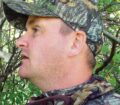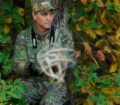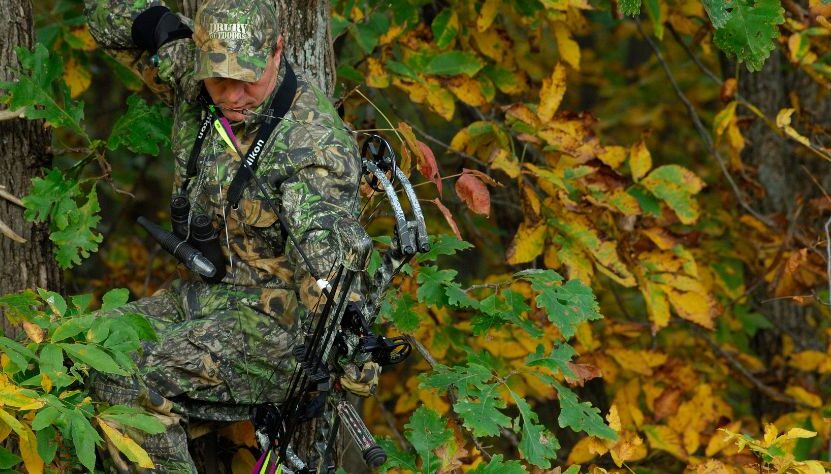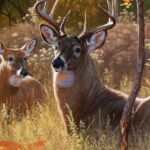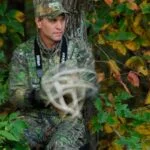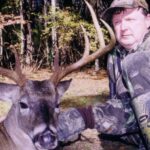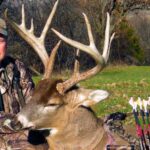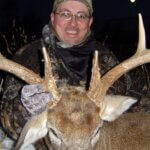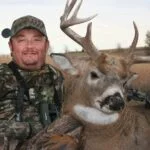Editor’s Note: Eddie Salter of Brewton, Alabama, began hunting at a very young age. Salter started calling turkeys competitively in 1981 and has amassed an impressive list of titles, including two World Open Turkey Calling Championships. He’s known nationally for his deer-hunting prowess and has starred on many outdoor TV shows and in numerous videos. This week Salter discusses tactics for taking deer.

How High to Climb
Often, one of the questions I’m asked at this time of year is how high up I climb in a tree stand when hunting. If possible, I like to climb 20 feet high in a tree, whether gun hunting or bow hunting. There are several reasons I like to get this high in a tree. Regardless of what height your tree stand is, when a deer comes into your stand area, you have to look at the animal with your binoculars; you also have to pick up your bow or gun, and then you have to move to get the shot. So, there’s a lot of movement going on in the tree. The higher you are in a tree, the less likely the deer will see your movement.
I do think you can get too high in a tree. If you’re too high in a tree, there will be more movement in the stand when the wind blows. Too, you end up reducing your angle, which creates a more difficult shot than you’ll have if you’re lower in the tree. Also, if you climb too high or set up too low, you won’t have enough branches to break up your silhouette. Therefore, I’ve decided that 20 feet is about the right height for me to be for my style of hunting.
What about Scents
Another factor that affects your hunting success is your scent. I strongly believe in being as scent-free as possible while hunting. I use all the Scent-A-Way products to get as clean as possible before deer hunting. However, if you’re alive and breathing, you’ll give off some odor.
I’ve learned that when I’m 20 feet high in a tree, there’s more of a breeze to blow odors out of the area. I have more confidence in my deer-hunting abilities and can make the moves I need to make without being seen or smelled. I’m not as confident the deer won’t smell or see me when I’m under 20 feet.
How to Be Confident in Shooting from Your Stand
Being confident that you have your tree stand in the best possible place to spot a buck is a major key to successful deer hunting. A fact that many hunters overlook is that you have to be confident that you can move and get off the shot without the deer ever smelling you. If you’re worried about the deer seeing or smelling you, it will distract you from taking the shot. If you go higher than 20 feet, you reduce the size of your target and your ability to get into the kill zone effectively.
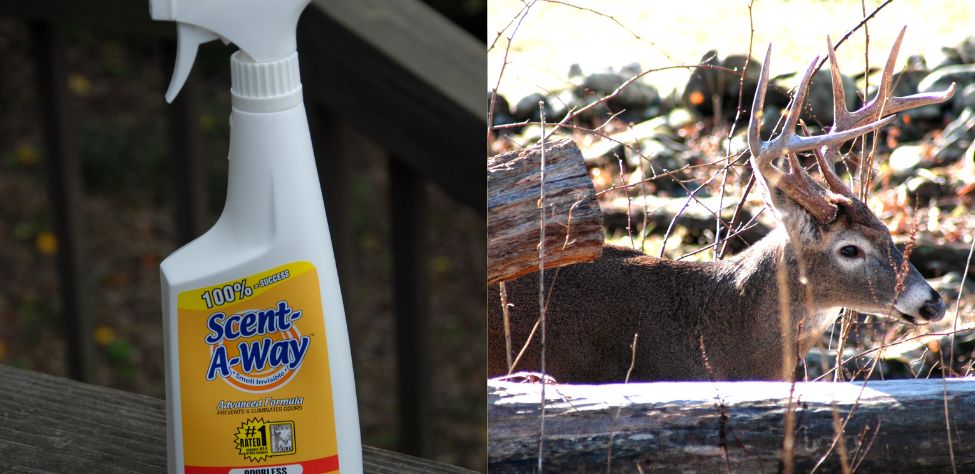
To shoot effectively at 20 feet high in a tree, you must practice shooting from 20 feet high. This way, you’ll know where your arrow or bullet will land. If you practice shooting from 20 feet high, then when you get into a tree stand and when the time comes to take your real shot, you’ll shoot like you’ve practiced. Of course, this is my own belief, and this is why I choose to hunt at 20 feet.
Why Wear a Safety Belt
There’s a very important factor we must emphasize before we leave this subject. Whether you’re hunting at 5 feet or 20 feet, don’t leave the ground without a safety belt attached to both you and the tree. If you love your family as much as I love my family, you won’t leave the ground without a safety belt. Regardless of how tough you are or how much you pride yourself on your ability to stay awake in a tree stand, you still may fall asleep. Falling asleep in a tree stand is just as dangerous as falling asleep at the wheel of a car and not having on your seat belt. If you have a nightmare while sleeping in your tree stand, and you happen to jump suddenly, you’ll be safe and not get hurt nearly as badly wearing a belt as you will if you fall 20 feet to the ground.
Another advantage to the safety harness is that it can give you additional range to shoot safely. I’ll often stand on the edge of my tree stand and lean around or down to get off the shot. That tree-stand harness allows me to lean out over my tree stand-without falling. The tree-stand harness provides two advantages for both bowhunters and gunhunters. Safety harnesses are designed to make tree-stand hunting safer and more effective. If you don’t have one to use, you’re not as safe or as efficient as you can be.
Expert Guidebooks on BowHunting Deer: Best Sellers

How to Hunt Deer Up Close with Bows, Rifles, Muzzleloaders and Crossbows
To be more successful as a deer hunter, learn all you can about the animal, the wind, the temperature and the techniques required to get in close.
In this book, you’ll hear about some of the best hunters in the nation who know how to hunt deer close, including one of the greatest archers who ever lived, Howard Hill.
John E. Phillips also shares his own deer stories and hunting tips from 50 years of experience.
VERSIONS: AUDIBLE, KINDLE & PRINT
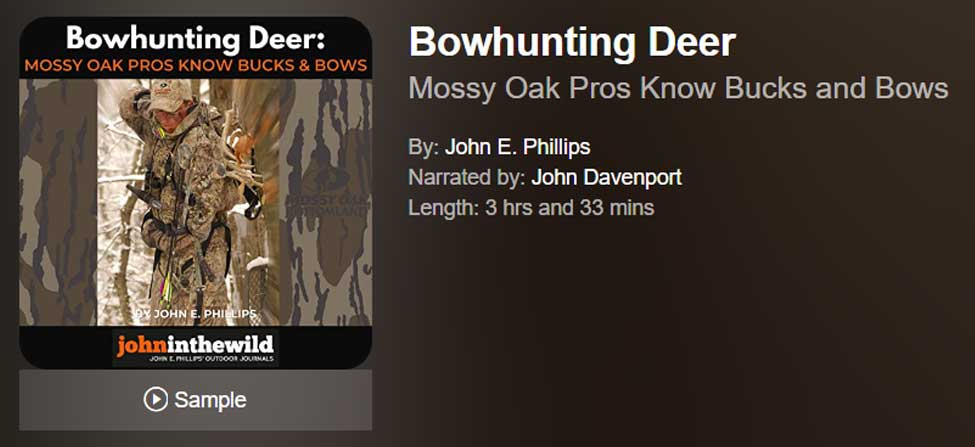
Many deer hunters have told me: “I want a deer-hunting book with regular hunters who are just like me” and “I want a deer-hunting book with the best advice from the best professional deer hunters in the nation”.
Mossy Oak’s Pro Staff is made up of some of the nation’s best deer hunters, professional deer hunters, and TV hosts whose names and advice often are heard in deer camps all over the nation. But many of the more than 1,000 Mossy Oak Pro Staff hunters are everyday, weekend, and vacation deer hunters just like you.
Whether you hunt private or public lands, you’ll find tips and tactics in this book from the Mossy Oak Pro Staff that will increase your odds for locating and taking the bucks of your dreams.
If you’re serious about learning to hunt and take deer with a bow, if you’re looking for a different strategy that will help you identify and harvest big bucks, if you want to learn from your misses as well as from the shots that connect, and if you enjoy being in the great outdoors that the Good Lord has blessed us with, then this book is for you.
VERSIONS: AUDIBLE, KINDLE & PRINT

How to Hunt and Take Big Buck Deer on Small Properties
In this book, you’ll hear from 14 hunters who either have gained permission or leased properties as small as six acres to as much as 250 acres, and how they consistently take older-age-class bucks off these little lands.
VERSIONS: AUDIBLE, KINDLE & PRINT

Jim Crumley’s Secrets of Bowhunting Deer
Using a black magic marker and a gray work jumpsuit, Jim Crumley of Buchanan, Virginia, drastically changed the nature and purpose of hunting camouflage when he created the first sportsman’s camouflage – Trebark. Crumley’s love of bowhunting and his desire to be more invisible changed hunting clothing forever.
In this hunting guide, he shares the wisdom that he’s learned throughout his lifetime about how to be a hunter, how to find a deer lease, how to scout for deer, and more.
Special features include how to:
- Have a magic 60 acres to hunt
- Decide the best equipment to use
- Find deer year-round
- Locate land to hunt
- Know the best place to put your tree stand
- Get bucks within bow range
VERSIONS: AUDIBLE, KINDLE & PRINT

How to Hunt Deer Like a Pro
How do you know if the land you hunt has a trophy deer on it? Wildlife manager Bob Zaiglin, of Uvalde, Texas and Jim Crumley, the father of modern-day hunting camouflage, tells you how to find out. GPS can make finding and taking that trophy buck easier. This hunting guide will teach you how to hunt big bucks where no one else can find them, how to call deer, and how to become versatile as a deer hunter, so that if one deer tactic doesn’t work, another one will.
In the chapter, “How to find Bucks at Scrape,” Dr. Keith Causey, retired professor of Wildlife Science at Auburn University, describes the best way to hunt a scrape.
Brad Harrison of Neosho, Missouri, is a nationally-known videographer, professional deer hunter and master at calling deer. Another master is Will Primos of Primos Game Calls. These two experts will tell the best deer calls and when to use them in this book.
And for over 20 years, Bo Pitman, lodge manager of White Oak Plantation, has been studying deer movement patterns. He explains what types of conditions are best for predicting deer movement.
VERSIONS: AUDIBLE, KINDLE & PRINT

Deer hunting and deer hunters are drastically changing each year. To learn new techniques for hunting deer and have more places to hunt, I’ve interviewed some of the best deer hunters in the nation and share their tactics in How to Hunt Deer Like a Pro: Volume II.
In Chapter 10, Jacob Lamar tells you his tactics for consistently taking older-age-class bucks on public lands in several states. Chapter 11, Bob Walker explains how to find places on public lands where you can hunt that 99 percent of the other hunters never have considered hunting. The Bonus Chapter with David Ramey tells you how, where, when and with what equipment to take big Kansas bucks on public lands by hunting in 100-degree weather when others won’t hunt.
Chapter 13, Mark Drury, his family and his guests take mature bucks every season by having more small places to hunt rather than one large property. Drury explains the strategy of having satellite farms to hunt that only may be 50-150 acres each or less. Chapter 15, Pat Reeve, who hunts far-northern states and Canada, says, “I don’t like hunting for mature bucks until the weather is 20 degrees or less.” Chapter 4, Dr. Larry Marchinton says that funnels are the most-reliable stand sites to hunt for big bucks and tells why.
VERSIONS: AUDIBLE & PRINT
Tomorrow: You Can Bowhunt Deer Successfully During Gun Season

